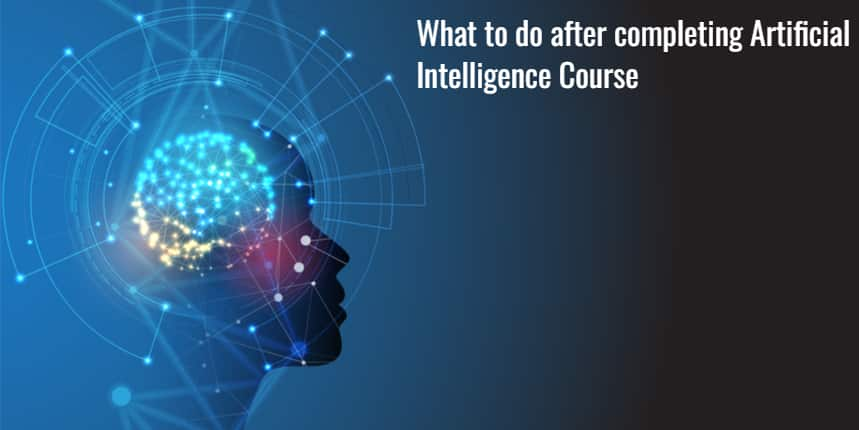Amity University BA Admissions 2025
Amongst top 3% universities globally (QS Rankings) | Ranked as India’s #1 Not for profit pvt. University by India Today
A course in Artificial intelligence can really set your career on a different trajectory. Especially when you account for the applied hands-on learning that one receives throughout the flow. The courses are designed to provide the basic foundation along with all the advanced concepts that one might need to leverage which actually solves complex business problems using AI. The most essential step after completing a course in artificial intelligence is to try your skills over an actual business problem. These are separate from the case studies and capstone projects that you did during the programme. You would have no more support for tips and tricks and guided flows from faculty members which makes it easy to solve these case studies.

Read more: Recent Artificial Intelligence Job Trends
During real-world problem solving the algorithms, to which we have access are numerous and one needs to have the right knowledge of the type of data and the type of algorithm which is the best fit for the data. So, you might realise that you would need to study data types and algorithms. Multiple choices of libraries and algorithms make it tough to pick the right one. AI is a field that is dependent on multiple complementary technologies such as Analytics, Machine Learning and Deep Learning. One would need to integrate multiple technologies to bring a holistic solution to light. Here is a quick list of issues that one might encounter while building an AI solution.
Once you run through this list, it will be clear that an AI solution cannot exist as a stand-alone module. It needs to be integrated with the core ERP system for maximum efficiency. One must understand how to use these complementary technologies ( on a high level ) to bring an end-to-end enterprise-grade solution to life.
Explore more:
A lot of high-quality public data is available these days that professionals can leverage to demonstrate a POC or a solution capability. This can be step two in sharpening your skills after pursuing a course in Artificial intelligence. The data must first be cleaned and cataloged which would give professional insights into data engineering and data management. In parallel, a strategy to store and use this data must be devised. There are multiple databases and API protocols that one might leverage to formulate a comprehensive data strategy.
Once the entire data strategy is formulated, the next step is to start integrating them with a platform that can enable multiple AI use cases. These use cases can be in the form of forecasting, prediction or discovery-enabling services. They usually have a ready-to-use front end and an easy-to-connect backend, which would be connected with various databases using APIs and other server services.
The next step would be to scale such solutions. The accuracy of AI solutions would sometimes vary largely as the amount of data grows. New parameters and variables also deeply impact the model and hence a small minimum viable product might now depict the entire picture. Here is a quick list of variables that might impact your final solution.
The list above highlights the need to practice over short MVP solutions before one tries out their hands with actual enterprise data. There are multiple challenges that one would encounter while implementing an AI solution, especially if they directly put their skills to work after a course. A practical hands-on experience would help a professional not only anticipate the challenges better but also in developing a more flexible and scalable solution.
Related: Top Providers Offering Artificial Intelligence Certificate Courses
It is recommended that one looks out for a large-scale AI implementation project which would give a professional the right exposure to replicate his/her success within multiple verticals. There are numerous paths that one can take to sharpen their skills, but the best path forward is through failing and learning.
Counselling Date:28 June,2025 - 07 July,2025
Ranked amongst top 3% universities globally (QS Rankings)
Ranked #1 Among all Private Indian Universities in QS Asia Rankings 2025 | Scholarships worth 210 CR
Ranked amongst top 3% universities globally (QS Rankings)
Ranked amongst top 3% universities globally (QS Rankings).
NAAC A+ Grade | Among top 100 universities of India (NIRF 2024) | 40 crore+ scholarships distributed
Ranked amongst top 3% universities globally (QS Rankings)